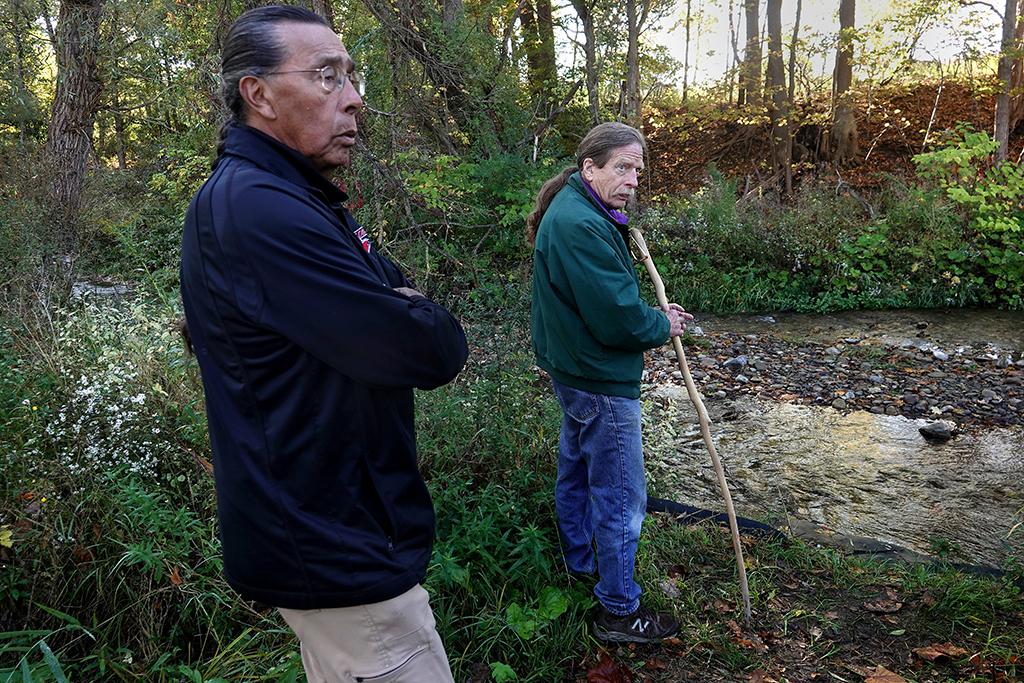After the completion of a land transfer from Honeywell International on Sept. 30, the Onondaga Nation reclaimed over 1,000 acres of their historic land, which include the pristine headwaters of Onondaga Creek and a bounty of native wildlife and natural medicines.
Hill, the Tadodaho of the Onondaga Nation, remembers swimming in the creek water as a child. Nowadays, Hill said, children don’t swim in the creek, whose downstream waters are brown and murky. Those downstream waters run full with silt and other deposits from mud boils, caused by salt mining.
“You have Onondaga Creek, you have Onondaga Lake. Can’t use these places,” Hill said. “I’m an Onondaga. What’s that tell you?”
Here, however, in the land the Onondagas reacquired, dozens of headwaters remain clean, clear and cold – safe for consumption, and ideal for native brook trout to thrive.
The 1,000 acres — two separate 758-acre and 256-acre parcels — are a mere fraction of the 2.5 million acres guaranteed to the Onondagas in treaties with the US government. This title transfer, though, represents a critical milestone in the Nation’s ongoing battle to regain its ancestral lands.
The transfer of land followed a 2022 resolution from the The U.S. Fish and Wildlife Service and New York State Department of Environmental Conservation that came as part of a broader plan to restore Onondaga Lake. The agencies directed Honeywell International, the corporation that owned the land, to cede the title of the parcels to the Onondaga Nation.
For more than half a century, Honeywell conducted solution salt mining, a process in which water is pumped underground to dissolve salt and push the brine to the surface. Decades of mining depleted the soil, leaving massive vacuums where the salt once was.


